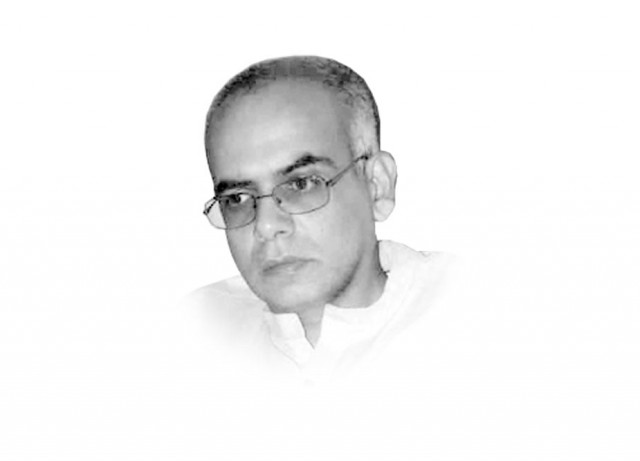Microfinance: an overrated solution
There is little evidence that microfinance schemes such as his have had any impact on poverty reduction

The writer holds a PhD from the University of Melbourne and is the author of Development, Poverty and Power in Pakistan, available from Routledge
Despite much-touted anecdotal studies often conducted by microfinance entities themselves, concerning the transformative power of micro-finance to help the poor become economically empowered, no significant evidence yet exists to prove that microfinance programmes have positive impacts on poverty eradication in general. Unbiased and the more comprehensive reviews of microfinance impacts, such as the one commissioned by the UK’s bilateral aid agency some years ago, have found microfinance’s popularity amongst donor agencies, governments and NGOs to be unsubstantiated.
The lack of evidence pointing to a direct correlation between availability of microfinance and poverty reduction is disappointing. Microfinance interventions aim not only to provide poor people the financial means to improve their lives, but also stimulate local economies through the creation of micro-entrepreneurship. However, when micro-loans are used to fund new businesses, poor entrepreneurs often face a lack of consumer demand since most of their potential customers are also from poor households, struggling to make ends meet. Given this lack of demand, even the most assertive of micro-finance entrepreneurs will at best displace an already-existing venture within their community, yielding no net increase in employment and incomes. And that’s certainly not the least positive outcome. It is even more likely that the new micro-businesses fluster and then fail, leading micro-finance recipients to become increasingly indebted.
Most microfinance loans are not even used to set up businesses but instead are used by borrowers to fund household consumption, or to pay for unavoidable expenses such as getting their children married off. In South Africa, for example, an estimated 94 per cent of microfinance loans are used for consumption purposes instead of setting up businesses, which can make enough profit to pay off the high interest charging micro-finance loans, and have some money left to improve the borrower’s household income.
The only stakeholders in the microfinance sector who seem to emerge as the clear winners are the lenders themselves, many of whom charge exorbitant interest rates to lend to the poor and use very extractive means to get their money back.
One may ask why the use of microfinance is still so popular despite these lacklustre results. One plausible reason for this lingering faith in the power of microfinance is that it provides a convenient strategy for those in positions of power and affluence so that they can contribute to the fight against poverty without experiencing any threat to the existing political economies of power, which sustain their privilege. To the providers of microfinance, it promises the chance of trying to save the poor while making a substantial amount of money from them.
Although the poor obviously do not have enough money, the reason why they remain poor goes beyond the mere availability of cash, especially if it comes with a price tag of high interest rates. Poor people need to be economically empowered by addressing the underlying reasons for their exclusion from political and economic processes, not by providing them with a small loan thinking that this in itself will help address their marginalisation or deprivation.
The provision of small loans or other financial services to the poor will never work until we address the background conditions that produce poverty in the first place. The list of needed measures to create an enabling environment for poor people to improve their lives is long. There is need, for example, for a fairer distribution of productive assets such as land or putting in place pro-poor labour legislation at the national level, and a rethink of unfair trade policies and aid conditionalities at the international level, which continue to disempower poor people in developing countries around the world.
Published in The Express Tribune, January 15th, 2016.
Like Opinion & Editorial on Facebook, follow @ETOpEd on Twitter to receive all updates on all our daily pieces.















COMMENTS
Comments are moderated and generally will be posted if they are on-topic and not abusive.
For more information, please see our Comments FAQ